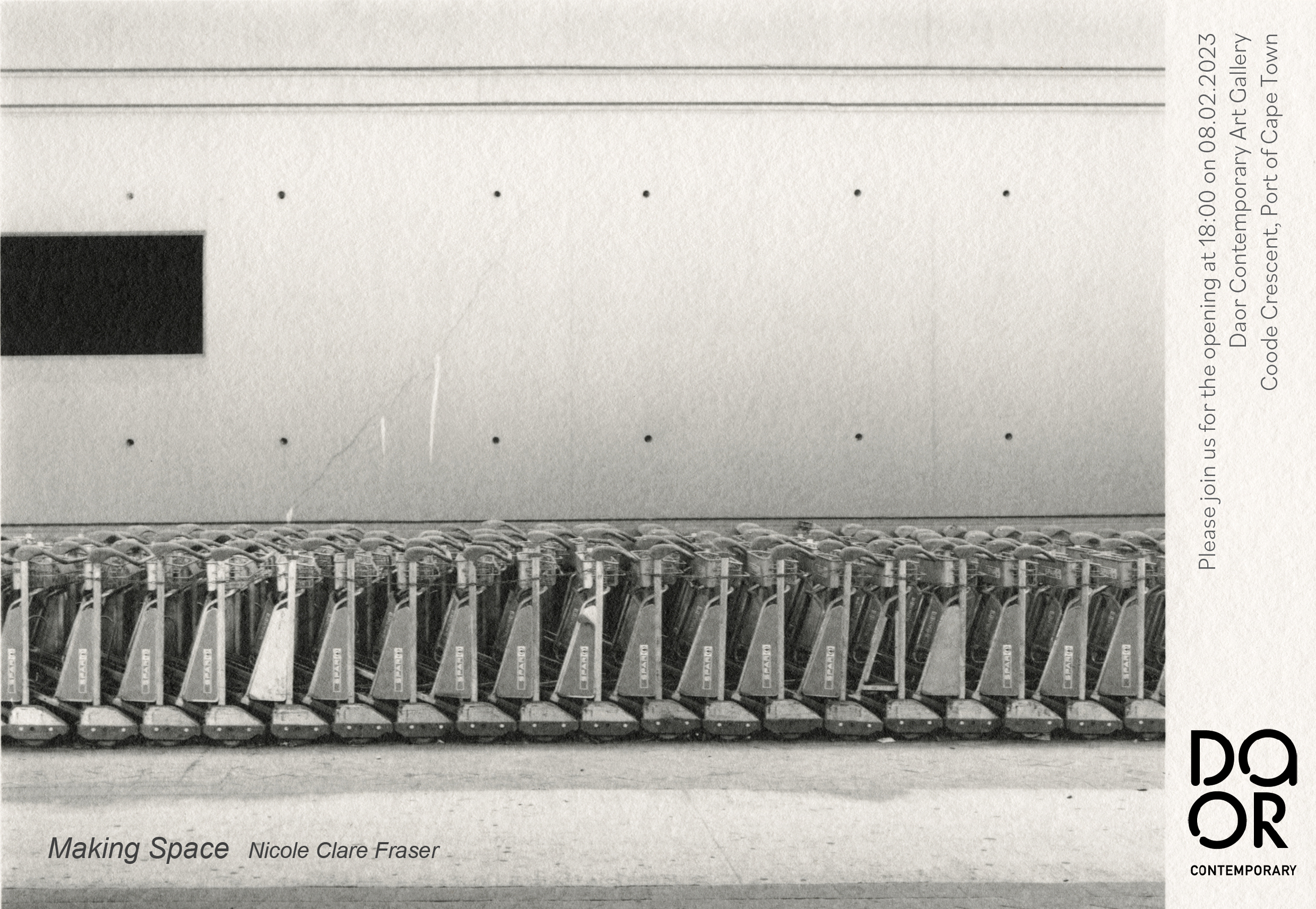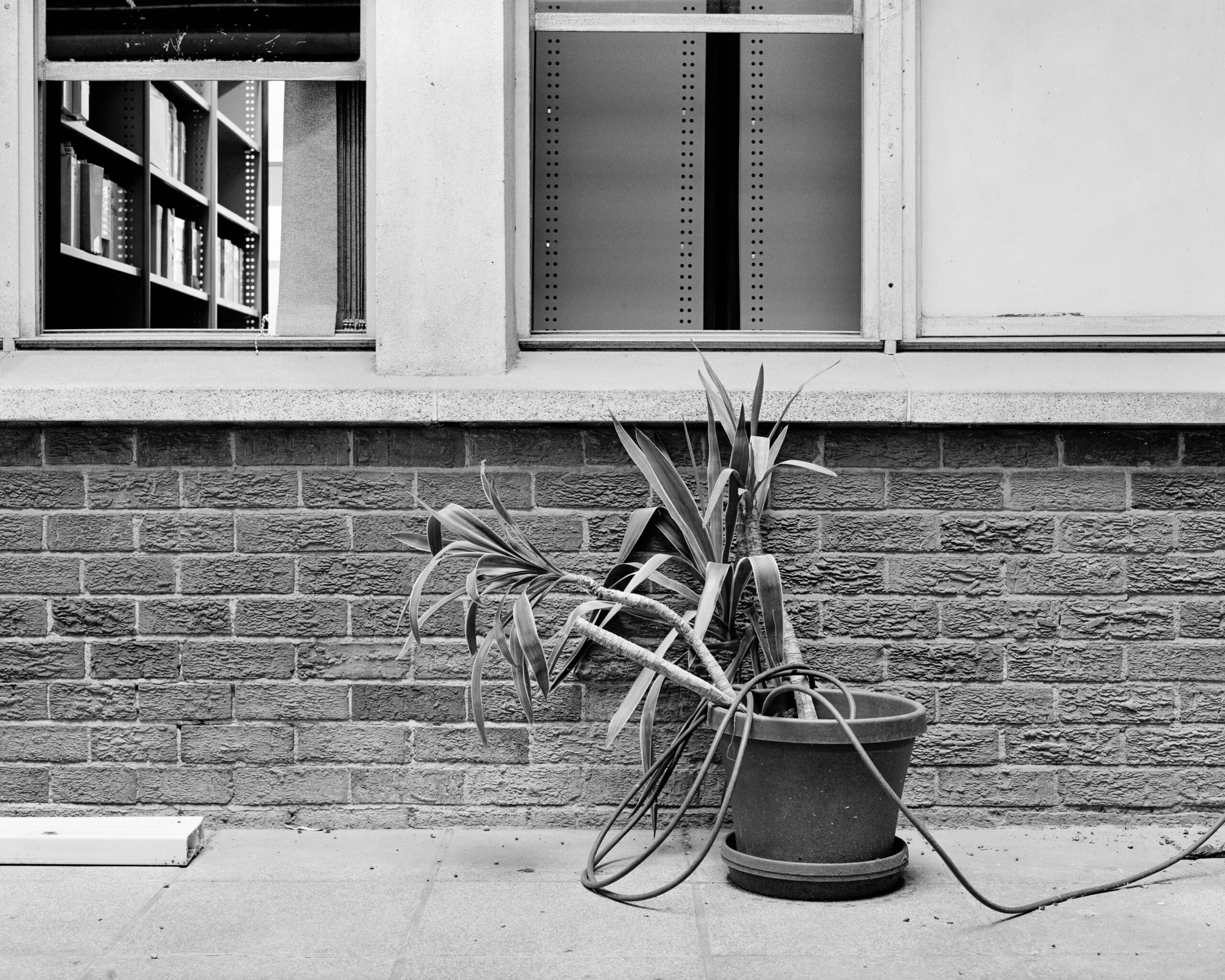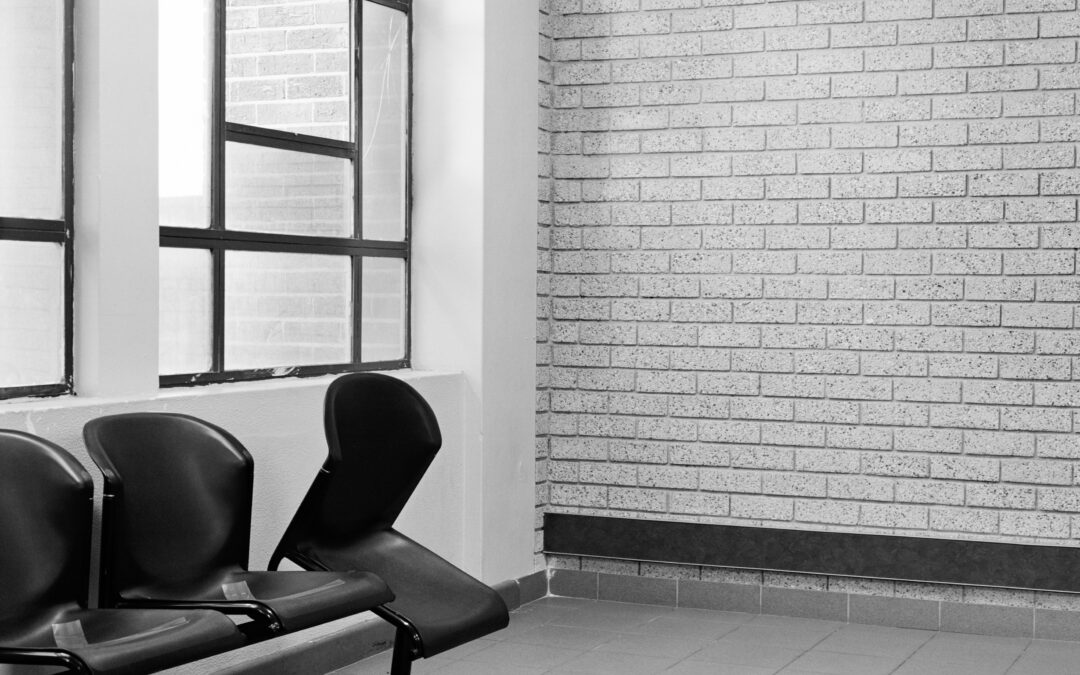Publication: Art Times

Making Space: Photographic Traces of Absence, Stillness and the In-Between in Public Spaces
View at DAOR Contemporary 08 February – 11 March 2023
Written by Nicola Kritzinger for Art Times
Nicole Clare Fraser’s solo exhibition entitled ‘Making Space: Photographic Traces of Absence, Stillness and the In-Between in Public Spaces’ feels like a particularly special way to start off 2023, akin to a new year’s resolution. Fraser’s photos that feel ’empty’ upon first viewing, offer a blank slate of potential to me as a curator, critic, and viewer. It offers the opportunity to think, write, and delve into the work, excavating the meaning derived from offering it to public experience in a post-pandemic episteme.
The usual ‘white cube’ gallery might not do the photographs justice as much as an industrial feel would – which made the DAOR Contemporary space the right place to exhibit such a body of work. Artists have been more involved in the curatorial process in the past decade or so, and with this exhibition, it feels not only right but necessary to work closely on every element of the curatorial process. This exhibition was part of Fraser’s Master’s degree at UCT, and the curation of it needed to honour the work as well as the production of knowledge inherent in the process.
The work was first exhibited during the height of lockdown and only a small number of visitors were allowed to view the work at its opening. This restriction of access during the first exhibition adds to the mythologies within the body of work, and in some way, the publicness of a repeated exhibition of this oeuvre is still inhibited by the restricted access to the Port of Cape Town. Accessibility is a constant theme not only in each individual work, but as a body of work, its meaning, and its display over time. There is a privateness inherent in the photographs on many levels.
The word ‘traces’ resonates specifically because of the marks left not only of human presence/absence in the photos, but because of the traces left on our spirits. It has taken me a long time to get back into public space, or spaces that feel activated again. The now-packed Gallows Hill Traffic department, the cinema, the opera, or hopping on a plane feel completely different. The photos, on the other hand, don’t feel triggering in the way that going out into the world again can.
Fraser has been working with elements of ‘Absence, Stillness and the In-Between in Public Spaces’ in her artistic practice for some time. This body of work did not stem from the sudden emptiness of space, but instead the abandoned places she photographed presented a unique opportunity relevant to her artistic thesis while devoid of their usual bustle. Recording human-filled spaces without people in them is challenging during ‘usual’ moments in time but during a lockdown, access faces new hurdles. The process of seeking special-permit access hides behind the images, bringing questions around publicness, accessibility, and belongingness into new frameworks; almost like these spaces have their own private lives when we are not present to activate them.
Fraser’s work and the idea of ‘space activation’ and her ‘object portraits’ are underpinned by Object Theory, loosely based around the work economist Igor Kopytoff who delineated the value of objects and their individual histories based on a Marxist framework, from which the notion of the object biography was derived. The object biography implies that objects have agency in the world, and hold value not only for their material use, but for the value of the private lives, encounters, and histories they embody. The meaning of objects and spaces without humans is explored keenly through Fraser’s body of work ‘Making Space’ creating biographical imaginings for the viewers to imbue related to their own experience.
Ruin Porn is something I often reference because as an area of display it holds a key to understanding our fascination with abandoned spaces and the Post-Anthropocene. Fraser avoids these tropes in her photography, circumnavigating the easy score of appealing to an audience tickled by the potential of our extinction. Rather, Fraser’s images denote a sense of waiting, of quiet silence, of spaces and objects that are to be meaningfully engaged again – bringing an element of patience and stillness from what was recorded during a time of immense tumult and chaos.
These photographs embody not only their immediate subject matter, but a depth of meaning relating to human presence. Elevating the quotidian and the unseen; photographing the banal, and the overlooked; and engaging with spaces we take for granted as inhabited asks questions around humanness and how closely tied we are to spaces we frequent. At first glance, these hand-printed black and white images are banal, of spaces that are our normal haunts, but upon closer engagement, they reveal themselves instead as haunted, contextually fraught and embodied.



Recent Comments